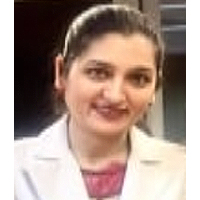KYAMOS Software - Mini Review on the Computer-Aided Engineering Industry
Published on: 28th January, 2025
This review underscores the transformative impact of Computer-Aided Engineering (CAE) on modern engineering, emphasizing its role in advancing sustainable and efficient technological solutions. The CAE industry is further analyzed, focusing on market trends and future directions. The CAE market is projected to grow significantly in the next five years in industries like automotive, aerospace, and energy, especially with the rapid advancements in High-Performance Computing (HPC), Artificial Intelligence (AI), Internet of Things (IoT), and Digital Twin technologies that enhance real-time optimization and predictive capabilities, thus fostering innovation in sustainable product design and performance. Lastly, this review presents KYAMOS Software and its state-of-the-art CAE solutions for tackling high-demand engineering problems, mainly concerning green technologies.
The Impact of Forensic Science on the Legal System in India
Published on: 24th February, 2025
Forensic science has significantly changed the way investigations into crimes occur by providing an approach to crime solving that is grounded in science. Since developments in investigative methods have a direct impact on litigation, its role has become increasingly important in the nation in recent years. The remarks, difficulties, and possible uses of forensic technology in the Indian legal system are discussed in this paper. By looking at case studies, legal frameworks, and forensic technology, this study emphasizes the increasing relevance of forensic science for sustaining justice, enhancing the accuracy of investigations, and overcoming problems with the use of forensic evidence in courts.
Impact of the MELD Scale on Hospital Admissions for Hepatocarcinoma (2000 to 2018), Brazil
Published on: 14th March, 2025
Background: The health professional appears to be concerned given the number of questions surrounding the patient’s post-transplant survival, patient selection method, and the continuous search for scores that reflect their reality and reconcile the results they desire with the patient’s expectations. It is from these considerations that the present work was born with the purpose of understanding the reality of patients hospitalized for hepatocellular carcinoma and what adherence to the Model For End-Stage Liver Disease (MELD) criteria meant in Brazil. Methods: This study is a discrete, univariate time series on emergency hospitalizations that occurred between 2000 and 2018, in the city of São Paulo, Brazil. Python version 3.11 was the software used for statistical treatment and analysis of the time series. Results: There were 6887 hospitalizations for malignant neoplasm of liver and intrahepatic bile ducts, in the period 2000-2006, of which 2898 were elective and 3915 (56.85%) were urgent in the period. There was an increase of 63.97% in the number of emergency hospitalizations in relation to the period 2000-2006 and 2007-2013. To highlight, in 2013 there were 1270 emergency admissions, which represented an increase of 109.22% in relation to the number of emergency admissions in 2006. The contingency correlation analysis demonstrated a significant association between the variables in which the chi-square value was 82.18, the p-value was 1.24 x 10-19, and the critical value was 3.84 with one degree of freedom. There was a 123.65% increase in the number of hospitalizations for chronic hepatitis, not elsewhere classified, between the periods 2000-2006 and 2007-2013. The chi-square value of the contingency association was 221.22, with a p-value of 4.90 x 10-50, a critical value of 9.488, with a significance level of 5% and one degree of freedom. The study showed an increase in hospitalizations of 21.88% for alcoholic liver disease between the periods 2000-2006 and 2007-2013. In the period 2000-2006, there were 21330 hospitalizations, 19224 of which were urgent (90.13%). In the period 2007-2013, there were 25997 hospitalizations, of which 22,802 (87.71%) occurred urgently. The chi-square value was 68.95, the p-value was 1 x 10-16, and the critical value was 3.84, with one degree of freedom. Conclusion: The MELD score, as it is sensitive to the patient’s severity, selects those who are at an advanced stage of the disease for liver transplantation. In this scenario, patients do not necessarily have access to outpatient services and begin to attend them regularly when MELD identifies the advanced stage of the disease, opening a gap between prevention, treatment, and rehabilitation.
Comparison of Body Fat Percentage and BMI in Pre-hypertensive and Hypertensive Female College Students of West Tripura
Published on: 3rd April, 2025
Background: Obesity is a significant health risk linked to hypertension and heart-related disorders in adolescents, impacting their future well-being . Since, the present work is to determine the body constitute including percentage of body fat correlates with cholesterol level which associate with Body Mass Index. Methods: This cross-sectional work was held in 120 college girls aged 19-23 years of Bhavan’s Tripura College of Science and Technology, Anandanagar at West Tripura. Anthropometric measurements such as standing height, body weight, sub scapular and triceps skinfolds, waist &hip circumference were collected. These records were used to calculate Body Fat Percentage (%BF) and Fat Mass (FM). Waist and Hip ratio (WHR) and Body Mass Index (BMI). FM, %BF and biochemical studies such as serum cholesterol level were also used to measures the body fat composition. Results: According to the present study, 53.33% of girls have a normal BMI, 8.83% are underweight, 31.67% are overweight, and 6.67% are obese. WHR results indicate that 54.17% of participants are classified as obese and 45.83% as non-obese. Out of 114 (95%) girls with normal cholesterol levels of 16 (13.33%) students are pre-hypertensive and 10 (8.33%) students are hypertensive. Out of 38 overweight and 8 obese students 13.34% are in pre or hypertensive. Based on WHR, 65 (54.17%) female students are obese; out of 65 obese students, 12 (10%) and 7 (5.83%) female students are pre-hypertensive and hypertensive, respectively and this value is statistically significant (p value < 0.05). Out of 55 (45.83%) no-obese students 8 (6.67%) girls are pre-hypertensive and 5 (6.67%) girls are hypertensive. According to BMI female students who are overweight or obese (5%) also have excessive blood cholesterol.Conclusion: This study expressed clear evidence of correlation in BMI, serum cholesterol level and Hypertension. These results are important for epidemiological studies to identify the cardiovascular risk in obese adults and help to solve a health problem of present Youngers in their future life. This study serves as an early health warning for female college students.
Caregivers’ Nutritional Awareness and its Impact on Pediatric Health Outcomes: A Study at Wad-Albasheir Health Center, Sudan
Published on: 3rd April, 2025
Background: Nutritional awareness among caregivers plays a crucial role in ensuring optimal pediatric health and development. This study assesses the level of nutritional awareness among caregivers and examines its association with demographic factors.Objectives: This study aimed to assess the knowledge and awareness of caregivers regarding dietary advice and complementary feeding for children under five years at Wad-Albasheir Family Health Center, Um-Bada locality.Methods: A cross-sectional study was conducted among caregivers in selected healthcare facilities. Data were collected using a structured questionnaire and analyzed using SPSS version 23. Descriptive statistics and chi-square tests were used to evaluate associations between variables.Results: The majority of caregivers demonstrated moderate awareness (60%), while 22.5% had low awareness and 17.5% had high awareness. A significant association was observed between education level and awareness (p < 0.05). Employment status also influenced awareness levels, with employed caregivers showing higher knowledge scores.Conclusion: Nutritional awareness is a key determinant of pediatric health. Strengthening educational programs targeting caregivers can improve child nutrition outcomes.
Forensic Insights into Multiple Stab Wounds: Autopsy Findings from a Case of Sixty Stab Wounds
Published on: 4th April, 2025
Multiple stab wounds are a critical forensic indicator, frequently linked to violent assaults, homicides, or self-inflicted injuries. These penetrating injuries result from sharp-edged weapons such as knives, daggers, or other pointed instruments. The depth, size, and severity of the wounds depend on factors including the type of weapon used, the force applied, and the anatomical location of impact. Forensic examination of stab wounds is essential in determining the manner of death—homicidal, suicidal, or accidental. Detailed analysis of wound characteristics, such as depth, trajectory, and associated injuries, aids in crime scene reconstruction. Additionally, identifying defensive wounds can indicate victim resistance, further supporting forensic interpretations. A meticulous forensic autopsy, including weapon analysis and internal organ assessment, is crucial in establishing the cause of death. These findings play a vital role in medico-legal investigations, providing key forensic evidence that supports legal proceedings and ensures justice.
















